Los Angeles city and regional planners are just as responsible for the Palisades, Eaton, and other fires that have burned in the past few days as if they had poured gasoline on the homes and lit the matches. The destruction of these homes, including, for what it is worth, homes owned by Jeff Bridges, Billy Crystal, and Paris Hilton, among other celebrities, is a direct result of so-called “smart-growth” policies that call for establishing greenbelts around cities and packing people in high-density housing within those cities.
Pacific Palisades is on the edge of the Santa Monica Mountains, most of which have been locked up from development in various regional parks, including 72,000 acres protected by the Santa Monica Conservancy, 157,700 acres in the Santa Monica National Recreation Area, and various smaller parks. These have severely limited the amount of land available for housing and other developments, driving up housing prices.
Although homes in Pacific Palisades sell for millions of dollars, the lots are small, generally between 5,000 and 7,500 square feet. Many of the larger lots are long and narrow, so the lot widths are often only about 50 feet. This means that homes tend to be built no more than about 20 feet apart and sometimes as little as 10 feet apart.
Source: Google Streetview.
One of the standards for building fire-resistant communities is that homes and other structures should be at least 50 and preferably 100 feet apart from one another, meaning homes should be built on around 1-acre lots. The two multi-million-dollar homes above are not only too close to one another, one of the homeowners has planted a tree and other tall vegetation between them. Unless the home on the right is built entirely of steel and concrete, once the home on the left catches fire, the radiant heat from that fire would be certain to ignite its neighbor. These homes were two lots away from parklands, so it is likely that they have burned to the ground. This is the same situation found in Colorado’s Marshall Fire as well as fires on the edge of Santa Rose and other California cities.
It’s not like this should surprise anyone in Pacific Palisades. The hills of southern California are some of the most fire-prone landscapes in North America. The first modern development in Pacific Palisades was Inceville, a movie studio that opened in 1911, which was mostly burned by a fire in 1916, and finished off by another fire in 1922.
There have been plenty of fires since then. The most recent was a 2018 fire that burned 97,000 acres and more than 1,600 structures, killing three people and forcing the evacuation of nearly 300,000. Despite these experiences, Los Angeles urban planners remain more intent on their dreams of compact development than on fireproofing their city.
We’ve also been treated to videos of bulldozers moving vehicles that were abandoned by their owners stuck in gridlock while attempting to evacuate the area. The videos aren’t absolutely clear where this took place but it appears to be on Palisades Drive, which is one of only two roads out of a neighborhood known as the Summit, the other road being a fire road that may not have even been open to the public. Greater development of the area now preserved by the Santa Monica Mountains Conservancy would have provided more escape routes.
Rebuilding existing homes and installing landscaping to firewise standards will help but won’t completely prevent future losses so long as homes are built close to one another. Forcing existing landowners to merge lots and build at only a fifth of existing densities is probably a non-starter.
The best alternative to prevent future fires similar to the Palisades Fire would be to sell a one-half-mile buffer strip of all park lands adjacent to existing urban development, zone that buffer strip for one-acre homesites, and require that the owners of homes built on those sites build to firewise standards (e.g., non-flammable roofs) and maintain defensible landscaping (e.g., few trees and none next to the houses). Such a buffer strip will protect existing housing from fire while the new homes built will do more to make housing affordable than any number of mid-rise or high-rise projects.

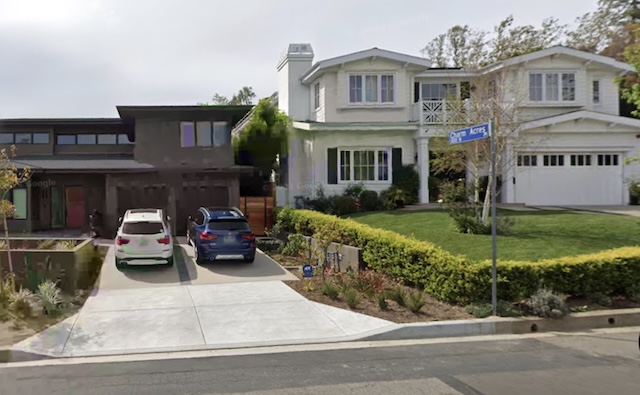
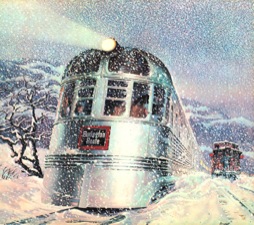

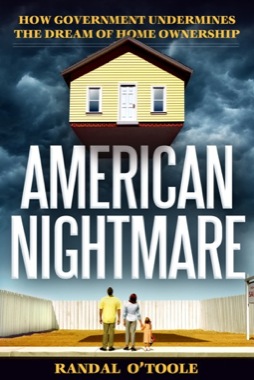
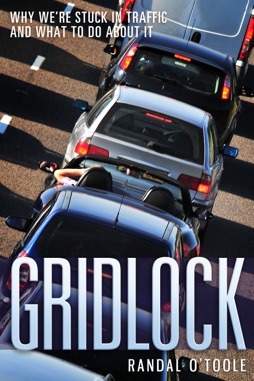
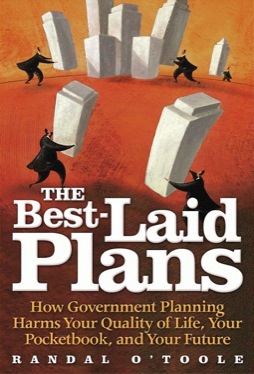
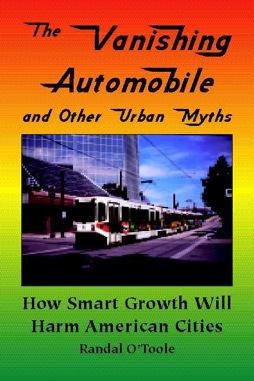
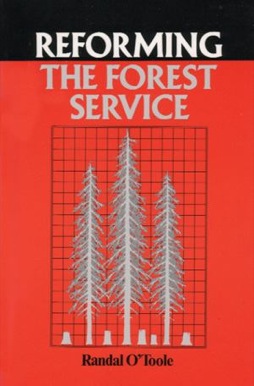
Imma build me a house out of wood.
Hey that’s great, where?
In a place that only gets 14 inches if rainfall a year has chronic water problems and has to import 90% it’s water from 150-750 miles away.
Well fuck….
Rome didn’t have this problem cause they build everything out of fuking stone of impeccable build quality…because even in ruin it’s still intact 2000 years later.
Having an adequate water supply so communities cam extinguish their own blazes is more practical.
Wildfires out in Colorado few years ago occured in areas buffers and low population density mcmansions, still went up in flames.
Water is not the appropriate tool for putting out fires like this. You need fire lines and people making sure the fire doesn’t cross those lines. The LA Fire Department doesn’t understand this and has been handling the fires in the wrong way. But the fires never would have been a problem if the city had a buffer strip of low-density housing kept to firewise standards around its large parks and conservancies.
“For those who have lost everything in climate disasters, the apocalypse has already arrived. And as the planet gets hotter, climate disasters will get more frequent and more intense. ”
“How bad things get depends on how long we let the fossil fuel industry continue to call the shots. The oil, gas and coal corporations have known for half a century that they were causing irreversible climate chaos, and their executives, lobbyists and lawyers chose to spread disinformation and block the transition to cleaner energy. In 2021, testifying in front of Congress, several C.E.O.s refused to end efforts to block climate action or take responsibility for their disinformation. They use their wealth to control our politicians.”
https://archive.is/PNhFA
These fires weren’t climate change, they were Arson.
Just like vast majority of fires previous years.
https://www.youtube.com/watch?v=utZicBl-DWA
Congress and American C.E.O.s have little say in the world’s “transition to cleaner energy”, whatever that is. Let me suggest that if you want to reduce world CO? emissions by any meaningful extent, persuade John Kerry and Al Gore and Greta Thunberg to hop on one of Kerry’s wife’s private jets for a CO? emissions tour of Asia, try to convince China and India and Vietnam and Indonesia to stop building coal power plants.
The United States emits 15% of the world’s CO?, Asia over half. Consider also that a third of the US West Coast PM2.5 emissions are spread from China. You may want to direct your righteous indignation at them, Jane.
Air Pollution in World: Real-time Air Quality Index Visual Map
This morning’s WSJ has an LA fire video piece which dealt only with water — they didn’t run out, but their system wasn’t designed to deal with “at least five wild fires at once.” No mention of city and regional planners and their “smart growth” policies.
I guess that comes later. Maybe.
And finally (WSJ) …
Lessons Learned From a Fiery Decade in L.A.
I’ve seen up close what comes next for families who lose everything. There is more that we all can do to reduce the danger.
WSJ
“These fires weren’t climate change, they were Arson.”
They were both caused by climate change and arson by the oil companies and their paid defenders like AP (until he got fired, now he does it for free)
It would be interesting to see a systematic analysis of density and fire risk. Short of packing people into lower Manhattan I would assume that the higher the density the greater the risk.
” the higher the density the greater the risk.”
That’s why Tokyo and Shanghai burn every year, just like California does.
I don’t see wild forests and chapparal in Tokyo. Tokyo is maritime influenced Pacific climate. It gets 74 inches of rain a year. If Los Angeles got 74 inches of rain a year, it would be a steaming hot jungle
is china reducing its global co2 emmissions to any great degree?
California was set to spend 128 BILLION dollars to build a train that no one will ride or be available til 2040.
Enough money to build 50 desalination plants capable producing combined total 2.5 Billion gallons of freshwater a day with enough money LEFT OVER to run them in cost consecutive operation for 40 years
Almost 30 years ago, Mike Davis (RIP) in his “Ecology of Fear: Los Angeles and the Imagination of Disaster” made short work of the AP’s “defensible” sprawl nonsense:
https://longreads.com/2018/12/04/the-case-for-letting-malibu-burn/
“[i]nstead of a long-overdue debate about the wisdom of rebuilding and the need to prevent further construction in areas of extreme natural fire danger, public attention was diverted into a discussion of the best methods for clearing vegetation (rototillers or goats?) and making homes fire-resistant. And if edge suburbs and backcountry subdivisions, in fact, could be fire-proofed, then why not add more? Since 1993. almost half of California’s new homes have been built in fire hazard areas. Yet, as a contemporary Galileo might say of defensible space, ‘still it burns.’ In the last eighteen months 20,000 homes and perhaps a 1,000 lives have been lost in one super-fire after another.”
“I don’t see wild forests and chapparal in Tokyo. ”
In other words, density has nothing to do with fires, contrary to your assertion.
Tokyo’s fire hydrants actually work. They have adequate water supply.
LA Mayor Karen Bass emptied city reservoir week before fires.
Prior that she has long history attachment Marxist political groups who wanted America to burn.
Bass is not unique..
Baltimore had Dixon and representative elijah cummings, New Orleans had Ray nagan, DC had Barry, Chicago has Brandon johnson and before that Lightfoot….
Just another example failed social experiment of taking prominent major city and handing the reins of civilization over to Sub-Saharans…. Just like South Africa or Zimbabwe you get a shitdumpster. In LA case a Dumpster fire…
Once again, JaneSchitforbrainsham fails take paragraphs, only takes ONE sentence out of context.
Tokyo gets 6 times more annual precipitation than Los Angeles area and has Pacific influenced climate.
CBS Sunday Morning interview, a Japanese Buddhist monk disclosed history Japan’ “Rock Gardens”, and when Asked Why they do bare rock instead of vegetation; the challenge was in keeping vegetation at bay. Britain and Japan have similar maritime climates, Leave a plot of land alone long enough, in matter weeks/months it festers in weeds. A year it’ll turn into a jungle.
Another history lesson… Tokyo doesn’t do wood, exception of historic buildings and some out of center housing. Most inner tokyo is Concrete… Because 80 years ago, we turned that Wood and Paper city to Ashes. So almost everything in the city is concrete, which is inflammable.
LA is a different breed of city. Built in a valley in an area already warm and dry. It’s biggest feature for attractive housing, is it’s biggest danger. The city occupy a valley which suffers living between the Los Angeles Basin and the San Fernando Valley makes the city susceptible to atmospheric inversion (where the layers of cool dense air go down the valley and press against the warm contaminated air already in the valley), which holds in the exhausts from road vehicles, airplanes, factories, etc, the smog season lasts from May-October, since LA gets little rain that absorbs the pollutants. In fire season, hot air rises but unless it moves over the mountain it never leaves the valley and falls back down over the mountain as dry wind which exacerbates fire season.
“Jane” is either Dan Staley or Andrew “the highwayman” or some other obvious troll cut from the same libtard cloth. Do not feed the troll. IGNORE IT.